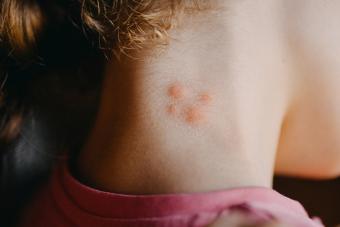
Shaving, tweezing, and waxing can lead to painful, unsightly bumps caused by ingrown hair. Learn more about what causes and how to prevent these swollen hair follicles.
Recognizing Ingrown Hair
Ingrown hair, often called "razor bumps," usually occurs where hair has been removed. The characteristic sign is a small bump which may be reddened, itchy, or painful. The hair itself may or may not be visible within the bump. In many cases, large areas are affected, with each individual ingrowing hair causing a separate bump. The resulting irritation may cause the surrounding skin to become darkened or reddened.
If the hair follicles become infected, the bumps may contain pus. In this case, they may resemble acne.
Why Ingrowing Hair Happens
When you shave, cutting the hair leaves the ends of your hair sharp. If the hairs curl as they grow, that sharp end can re-enter the skin instead of growing outward. The ingrowing hair irritates the skin and causes the bump that you see. Skin irritation caused by close shaving or tight clothing seems to make the problem more likely.
Ingrowing hair can also happen with other methods of hair removal, including waxing, tweezing, and sugaring. Although these methods remove hair below the surface of the skin, the hair can curl back on itself as it grows.
The most common site for hair that's ingrown is the beard area on men. People who shave at the bikini line often have this problem, too. Curly-haired people tend to be affected more than people with straight hair. But it can happen to anyone, anywhere on the body that has hair.
Treatments
Left alone, most ingrowing hairs will eventually get better on their own. The easiest way to get rid of razor bumps is to stop shaving until they're completely gone. Growing a beard or learning to live with a messy bikini line is essentially a cure.
However, the bumps can be unpleasant and unsightly. They make ongoing shaving or other hair removal unpleasant and even painful. It can take weeks for them to get better, and not everyone is willing to accept letting the hair grow during that time.
If you have just a few bumps and you can't leave them alone, here are some things to try:
- Gentle exfoliation. Try rubbing gently with a washcloth or loofah to free the hair. Don't scrub too hard, because this can make skin more irritated.
- Tweezing. If you have just one or two bumps and you're able to see the hairs, you may be able to pluck them out.
If you have a lot of bumps, rubbing or picking at them is likely to irritate the skin and make it look even worse. Try to be patient. Once they're gone, there are things you can do to keep them from coming back.
Prevention
For some people, razor bumps are a chronic problem and permanent hair removal is the only answer. Most of the time, some simple changes to your hair removal routine can help.
- Leave hair a little longer when you shave. You can find electric razors which come with a guard that prevents a super-close shave.
- Shave in the direction of hair growth, instead of against it.
- Shave less often.
- Draw the razor over each area only once. Don't use repeat strokes.
- Use a lubricated shaving gel designed to prevent razor bumps.
- Moisten the hair with a warm towel for several minutes before shaving.
- Try a different method of hair removal. If tweezing always leaves you with bumps, try waxing or shaving.
- Try a depilatory cream, which may be less likely to lead to ingrown hair because it leaves the ends rounded instead of sharp.
If the Hair Follicles Are Infected
The medical term for infected hair follicles is "folliculitis." This can happen on its own, or it can accompany ingrown hair. Mild cases of folliculitis may get better on their own, but often antibiotics are needed. Your doctor may prescribe pills or a cream that you apply to the affected area. If the folliculitis keeps coming back, you may need to stop hair removal on that area for several months to let the skin heal completely.







